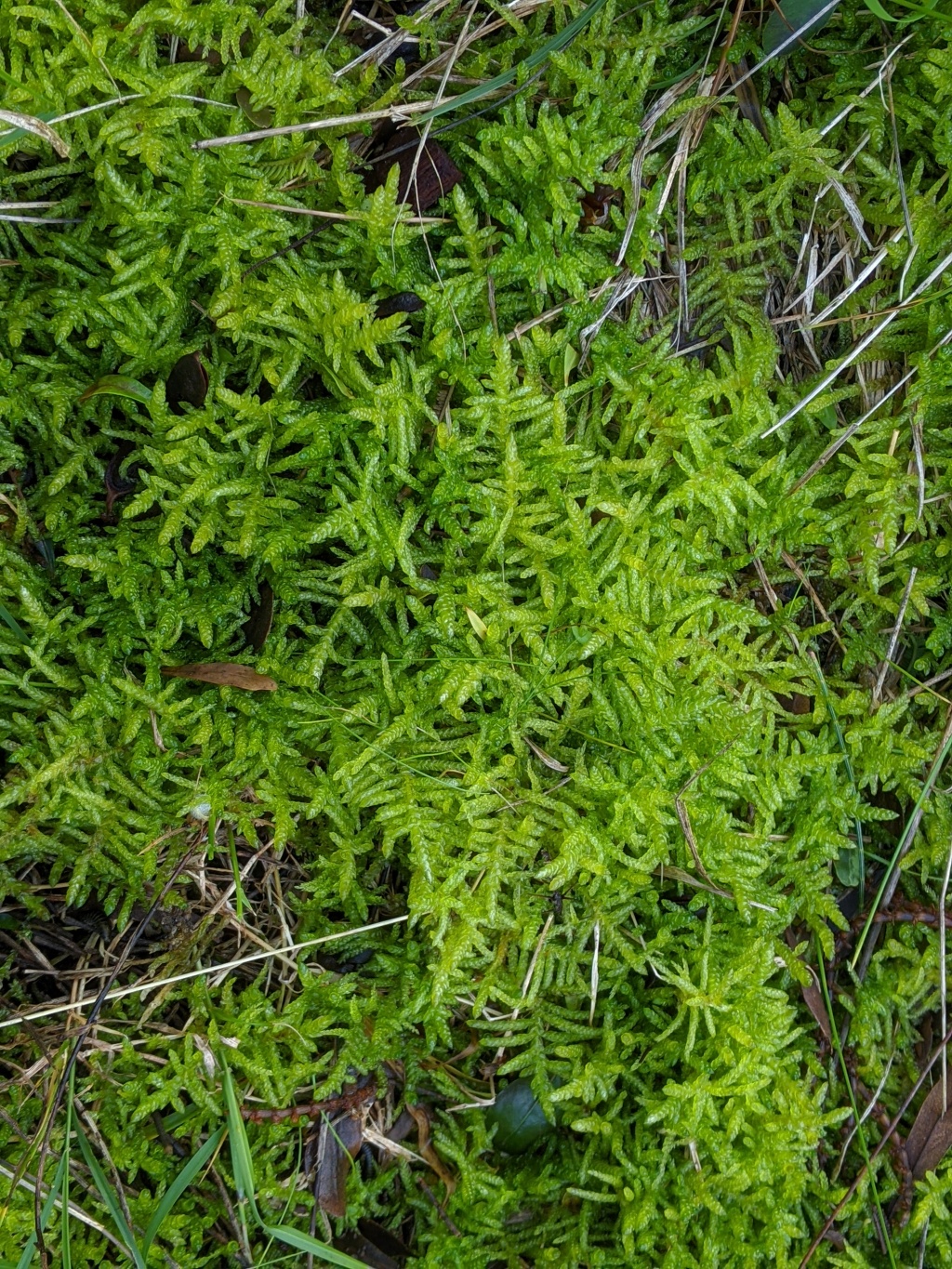Pseudoscleropodium purum
(Hedw.) M.Fleisch.Dioicous. Loosely interwoven mats on soil, green or yellow green. Stems mostly ascending, (20–) 60–100 (–150) mm long, pinnately or subpinnately branched, yellow, with fascicles of red-brown rhizoids, central strand present, with branches mostly 8–15 mm long. Stem and branch leaves differentiated only by size, loosely erect, imbricate, broadly oblong-ovate to nearly cochleariform, strongly concave, often weakly plicate or wrinkled when dry; costae single, extending 1/2–2/3 leaf length, not ending in abaxial spine; apices apiculate, reflexed; margins denticulate toward apices, plane or narrowly recurved at base; cells linear, 46–85 μm long, c. 4 μm wide, smooth, shorter near base; alar cells thick-walled, subquadrate to short-irregular, forming a small and poorly defined concave group; stem leaves mostly 1.5–2.4 mm long, (0.8–) 1–1.5 (–1.8) mm wide; branch leaves 1.2–1.5 mm long, c. 0.8 mm wide. Setae 20–53 mm long, red or brown, smooth. Capsules inclined to pendent, short-cylindric, curved, 1.5–2.5 mm long. Operculum conic-apiculate to shortly-rostrate, 0.7–1 mm long.
GleP, VVP, GipP, CVU, EGU, HSF, Strz, VAlp. Mostly in disturbed sites such as besides tracks in forest and woodland of Melbourne’s eastern suburbs to the Morning Peninsula and Yarra Ranges, but sporadically appearing near picnic areas and campgrounds in reserves throughout southern Victoria. Also SA, NSW, ACT and Tas. Native to Europe and naturalised in North America, Jamaica, Hawaii, Argentina and Chile, St Helena, Réunion, Sri Lanka, Japan, Taiwan and New Zealand.
 Spinning
Spinning

